Abstract
Sporulation mutants of Bacillus subtilis, blocked either in the citric acid cycle or in another pathway necessary for uracil incorporation during the developmental period, were tested for their sporulation response to different carbon sources. All of the citric acid cycle mutants and all but one of the other mutants failed to respond. The one phenotypically curable mutant, 60764, responded to most metabolizable carboxylic acids, such as acetate and fatty acids, and to some other carbon sources. For an optimal response, it was necessary to add the compound at a certain concentration and time (0.08 m for acetate, when the extinction of the culture at 600 nm was 1). A liquid medium was devised in which an appreciable amount of antibiotic activity against Staphylococcus aureus was produced by our standard strain 60015. The mutant 60764 produced, even in the presence of palmitate, 20 times less antibiotic and sporulated more slowly than 60015. The antibiotic activity in both strains consisted of three major and several minor molecular species, as detected by thin-layer chromatography. When purified antibiotic was added to an exponentially growing culture of our standard strain of B. subtilis, lysis ensued, the extent of which increased with the concentration of the antibiotic added; later, resistant bacteria grew up. Three mutants unable to produce antibiotic activity were isolated and found to be deficient in sporulation. These findings show the close correlation between sporulation and antibiotic activity, but they do not prove that antibiotic activity is needed for sporulation.
Full text
PDF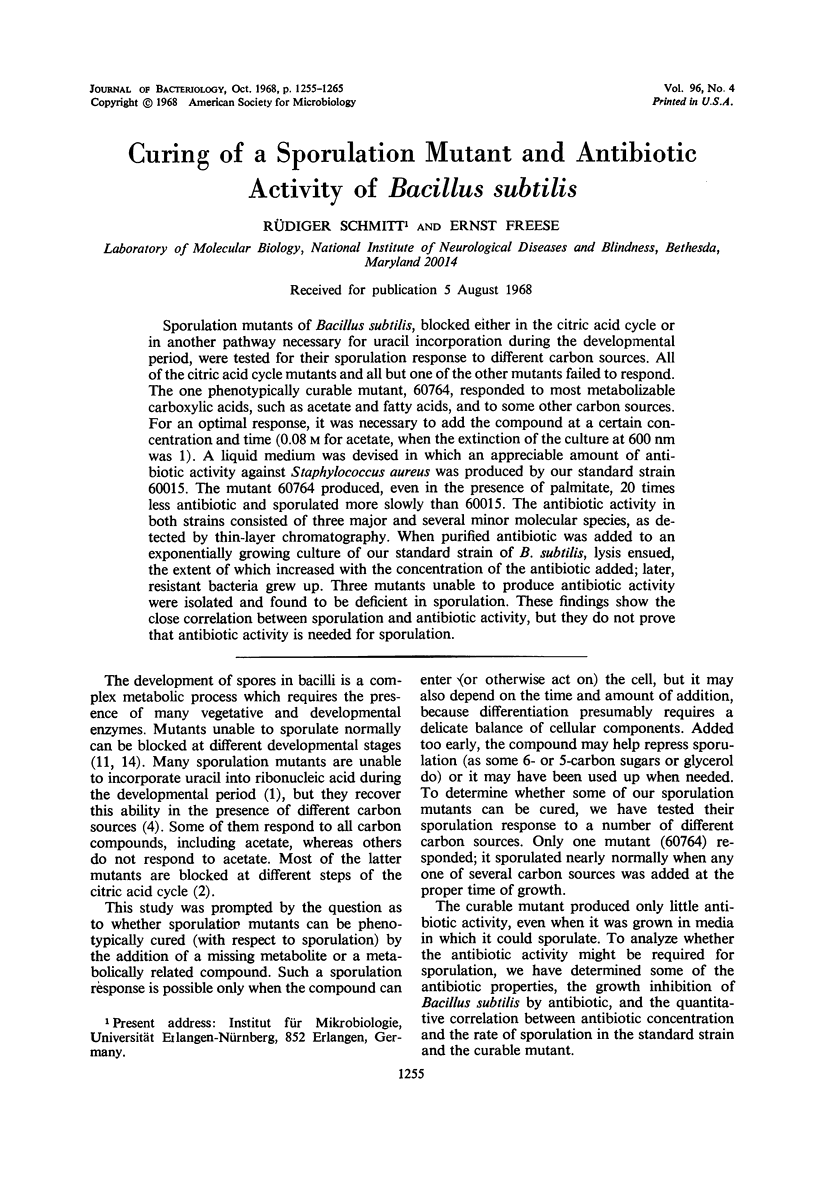
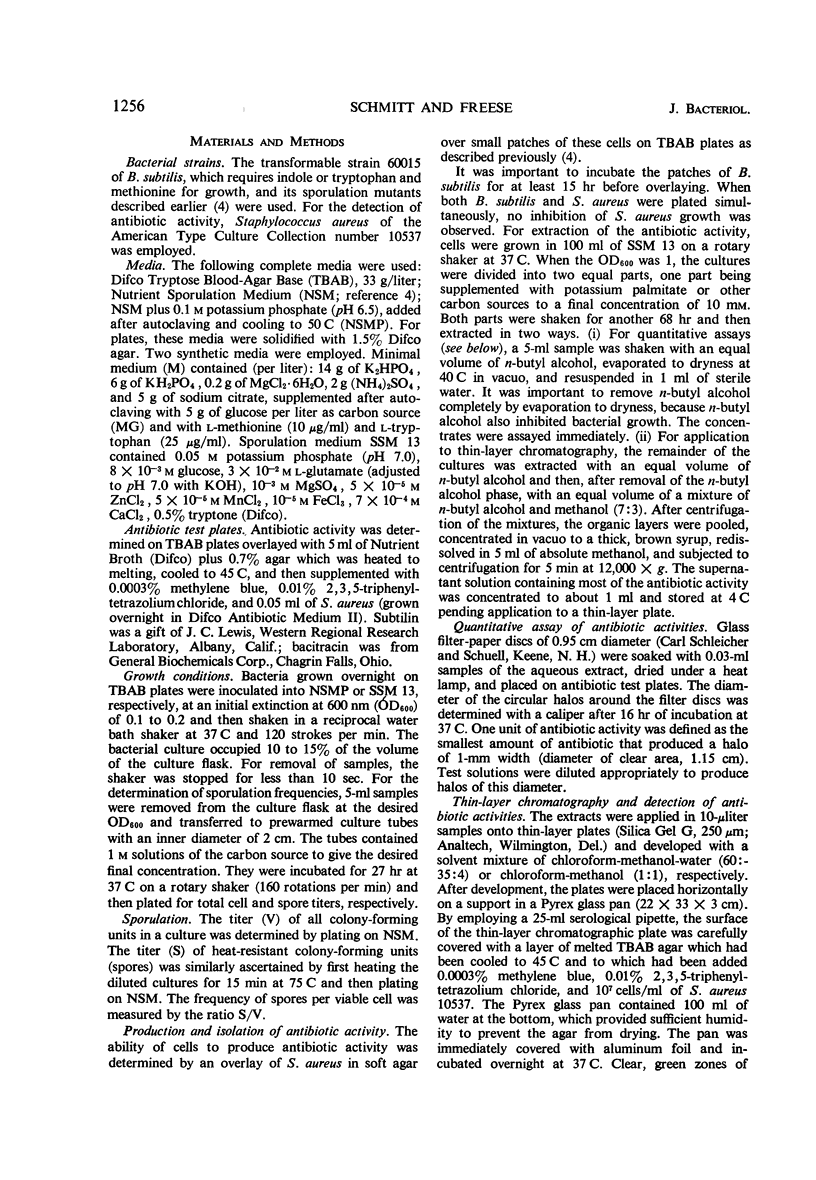
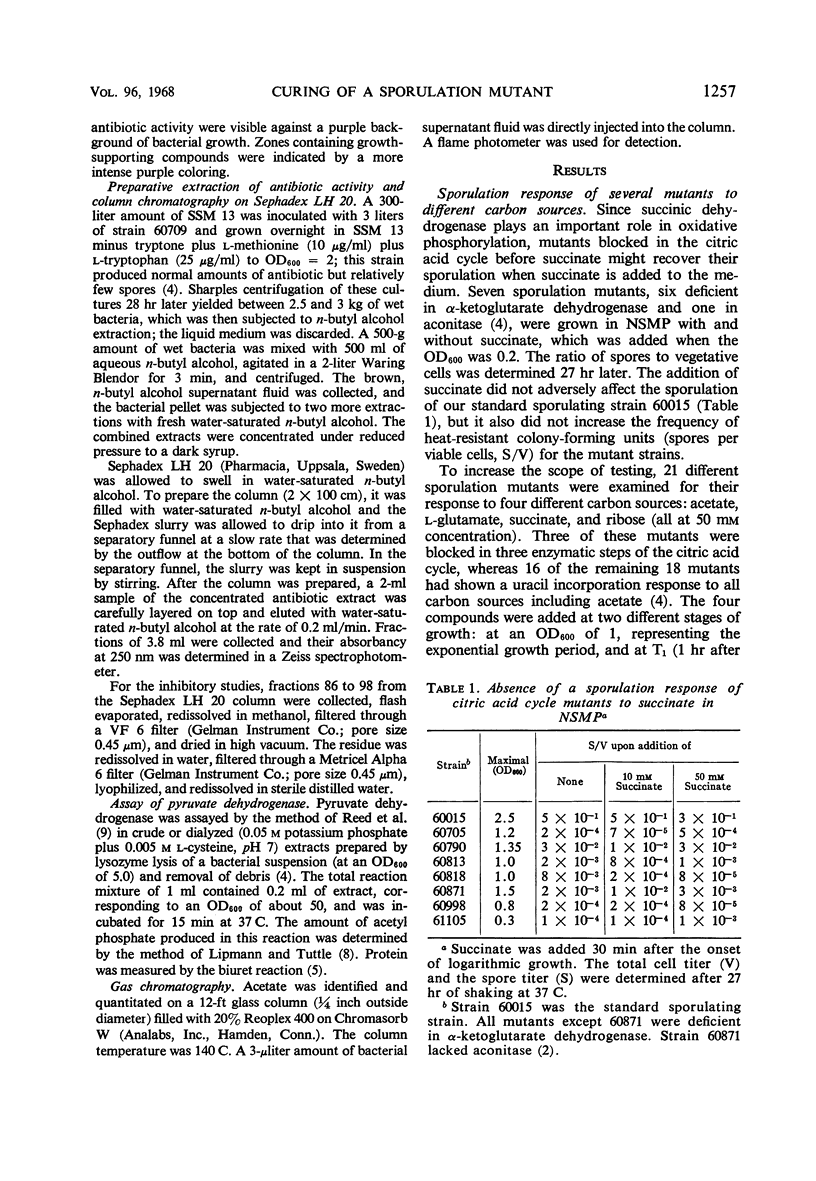
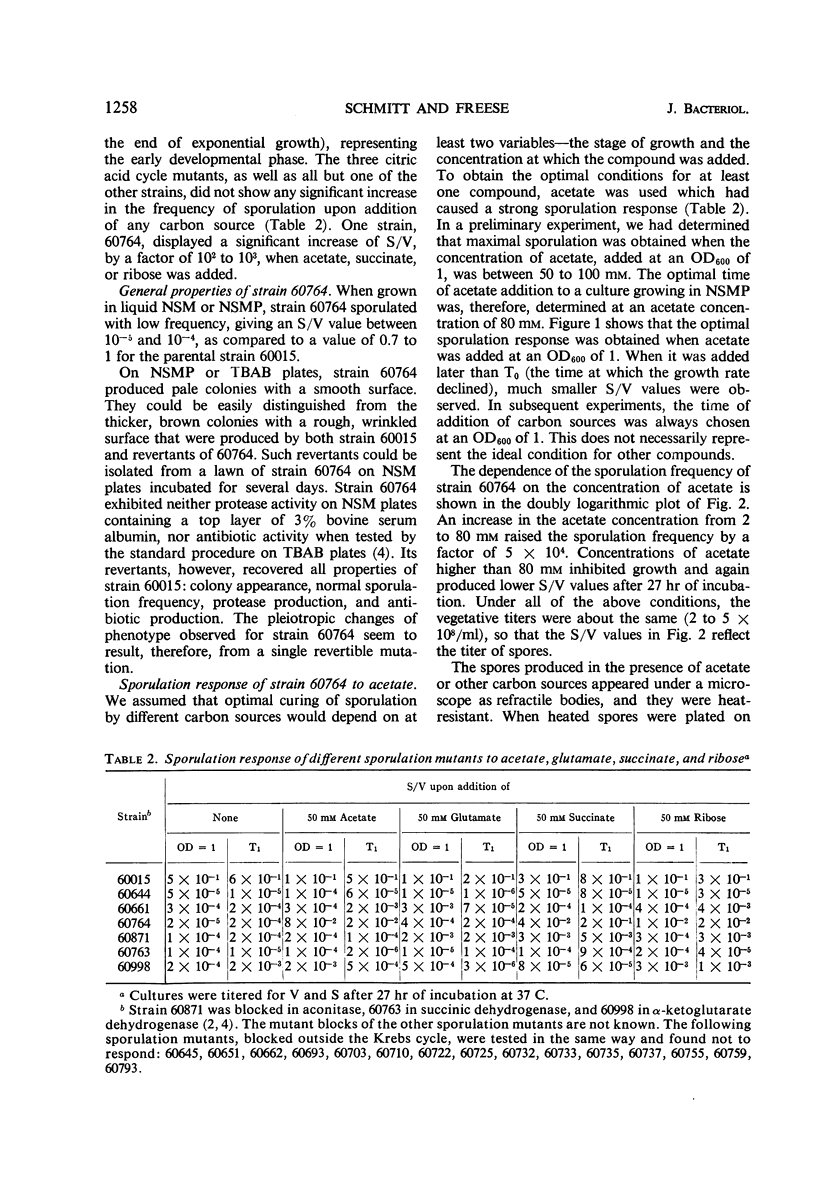
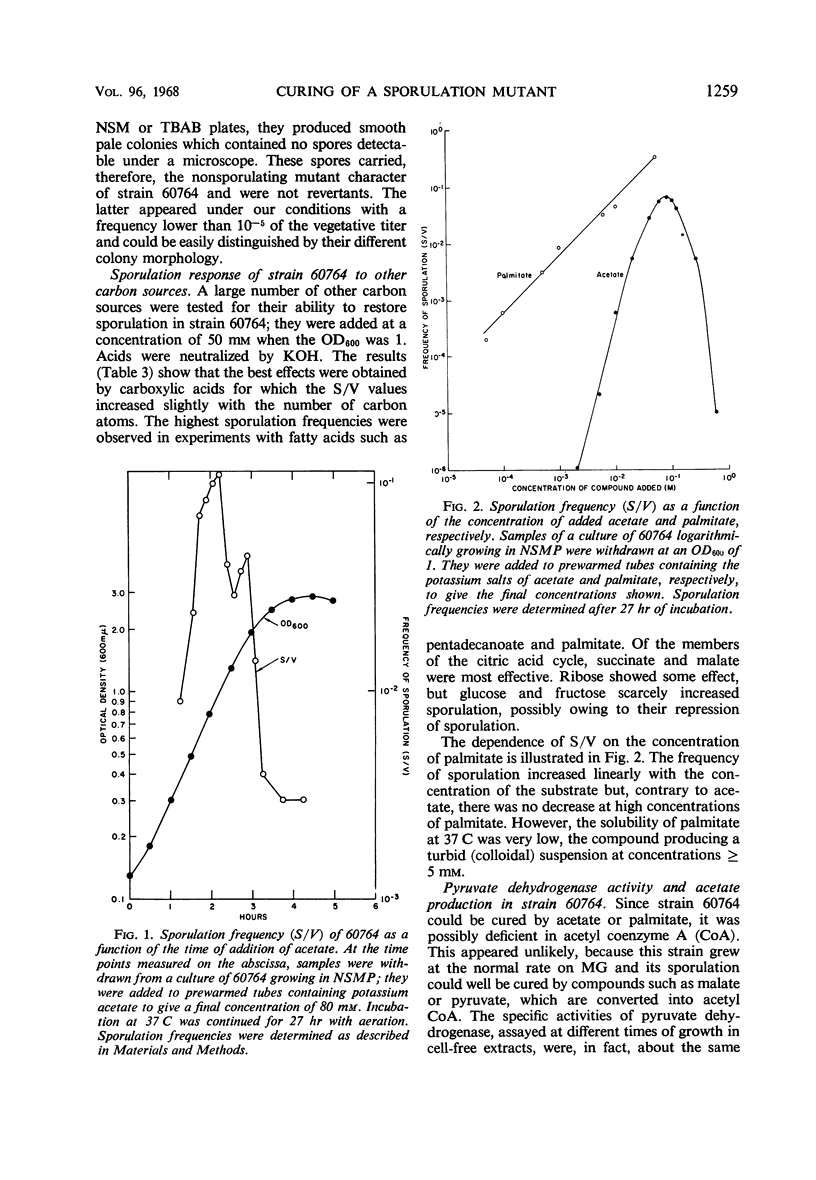
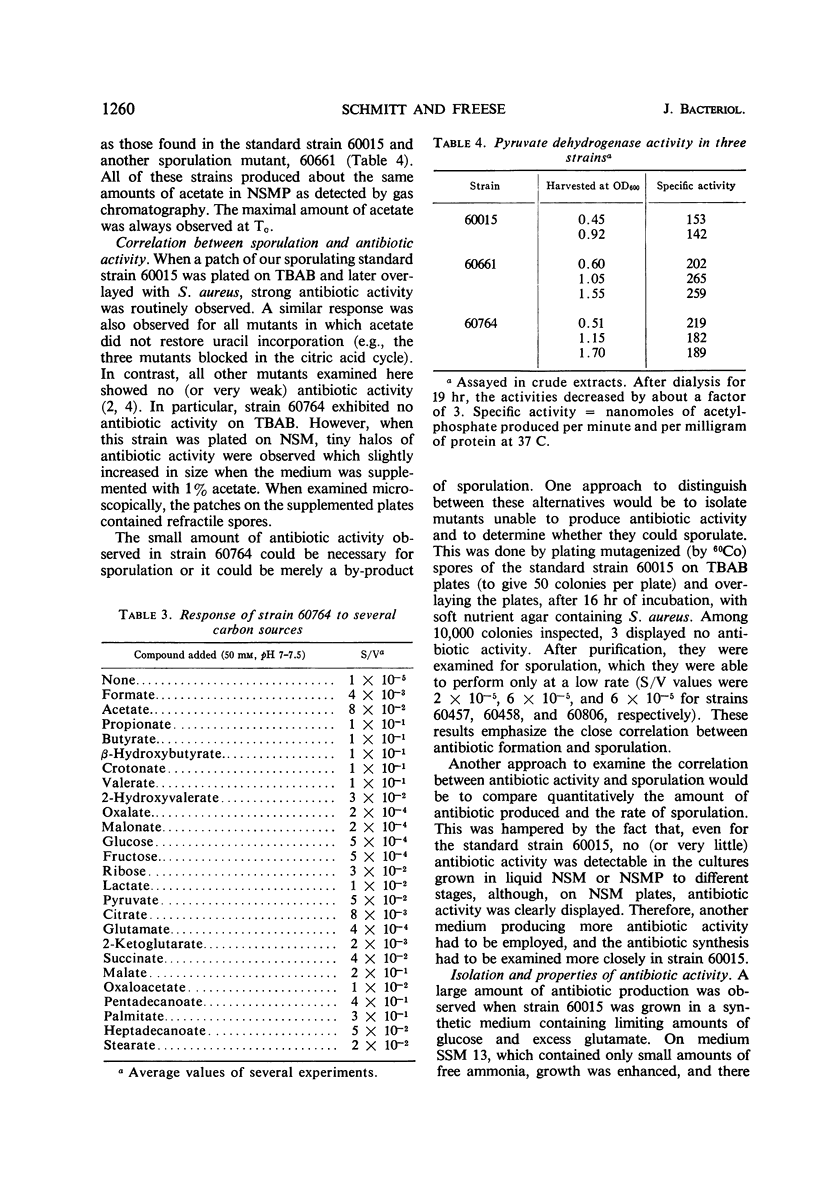
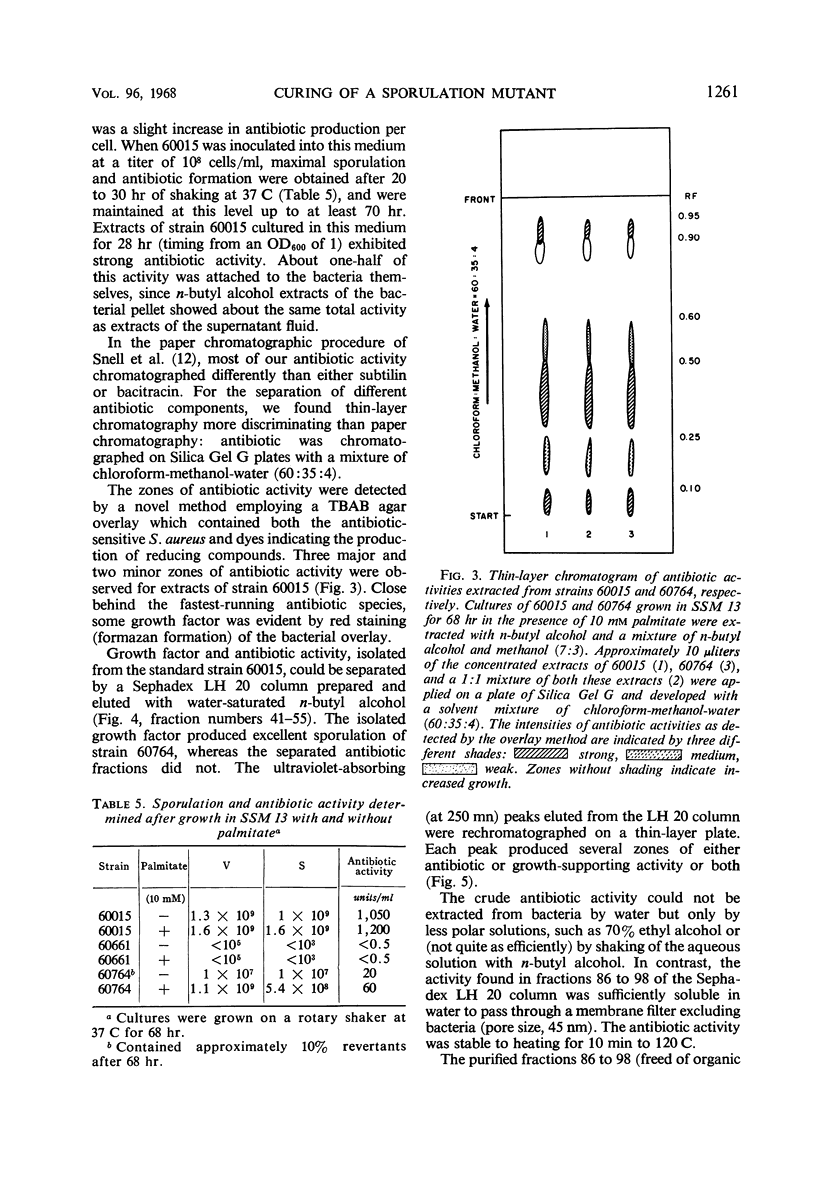
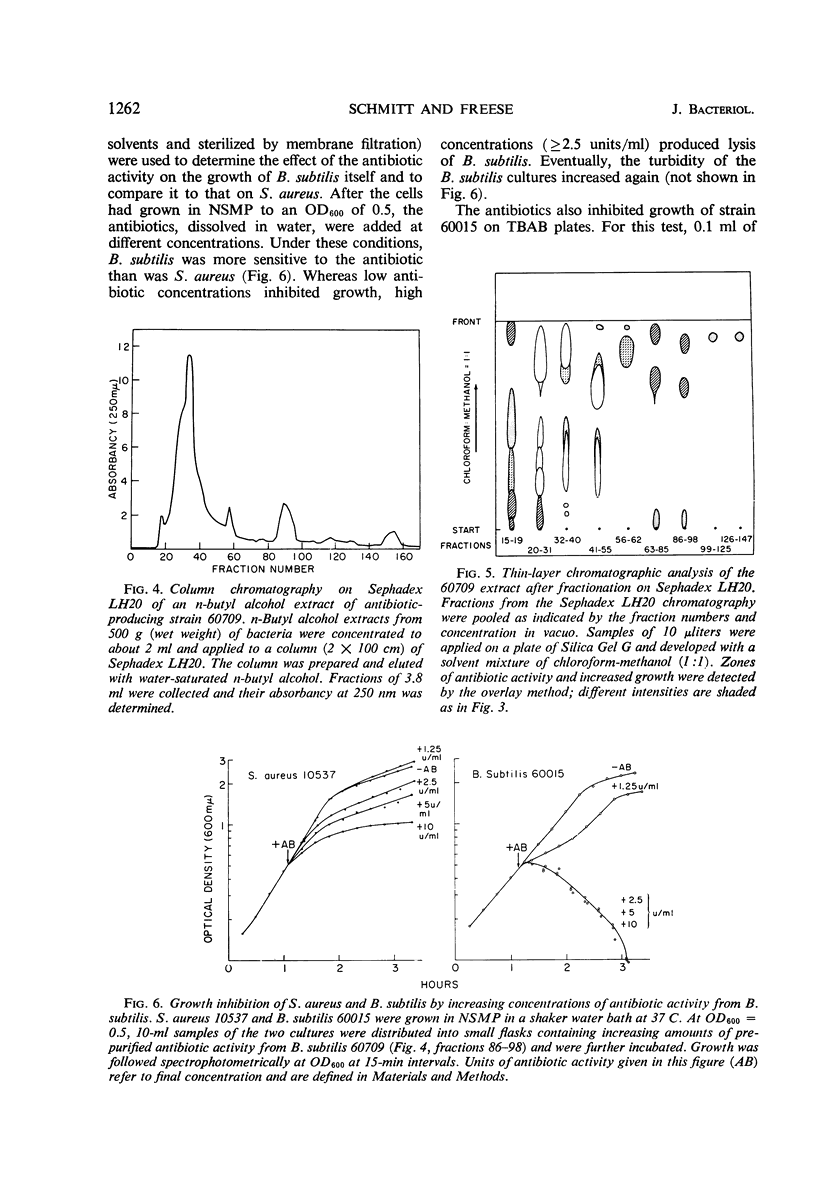
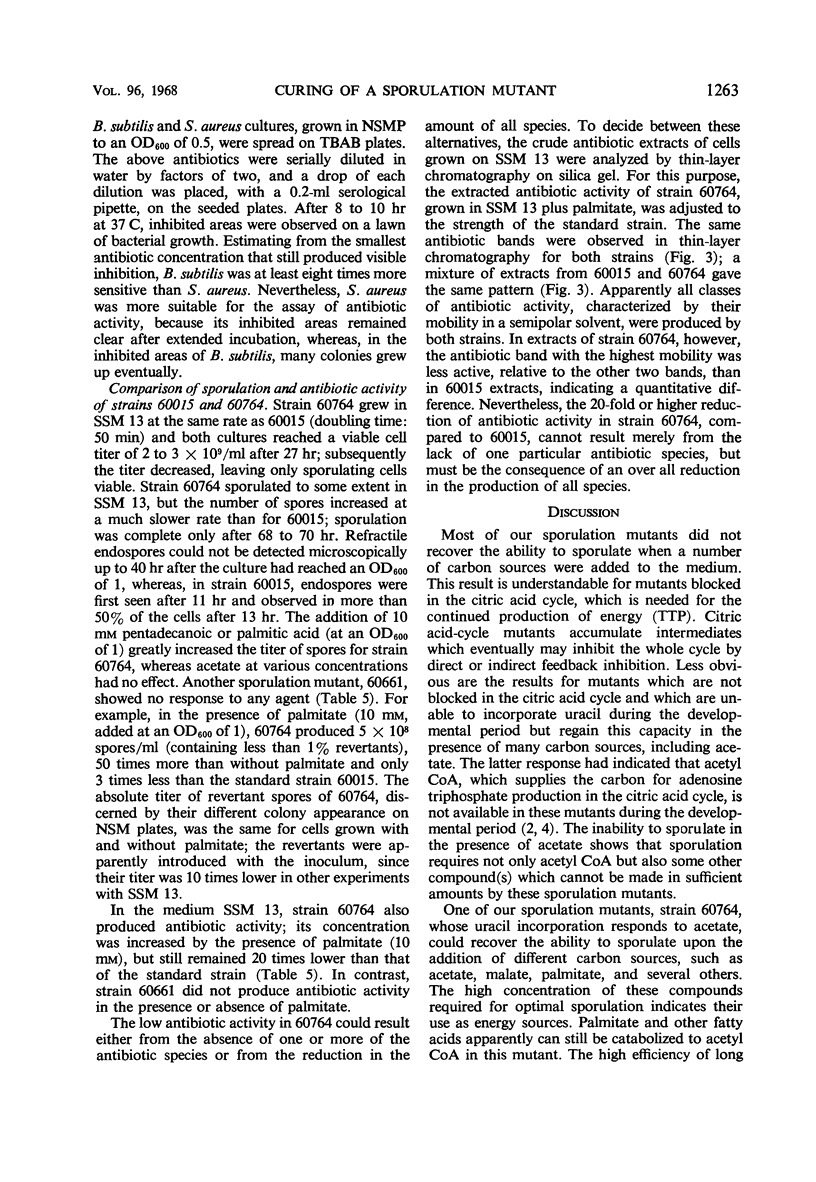
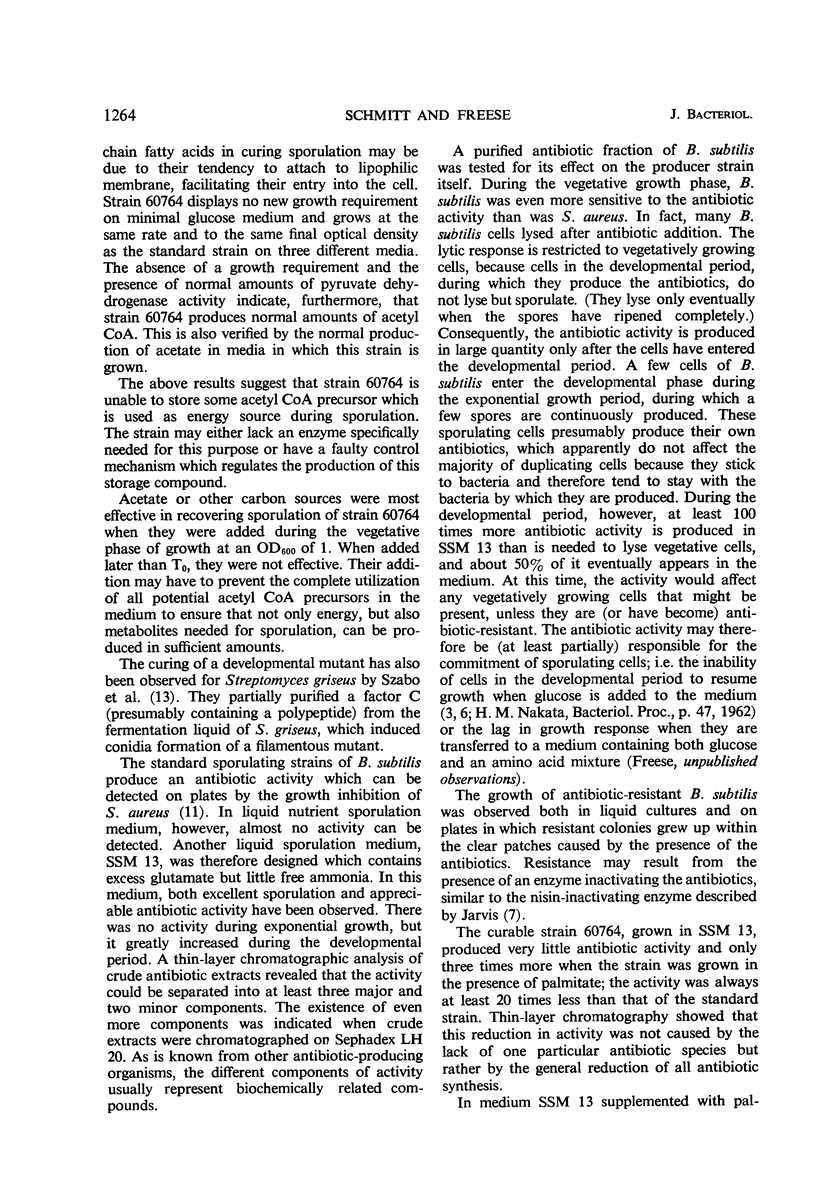
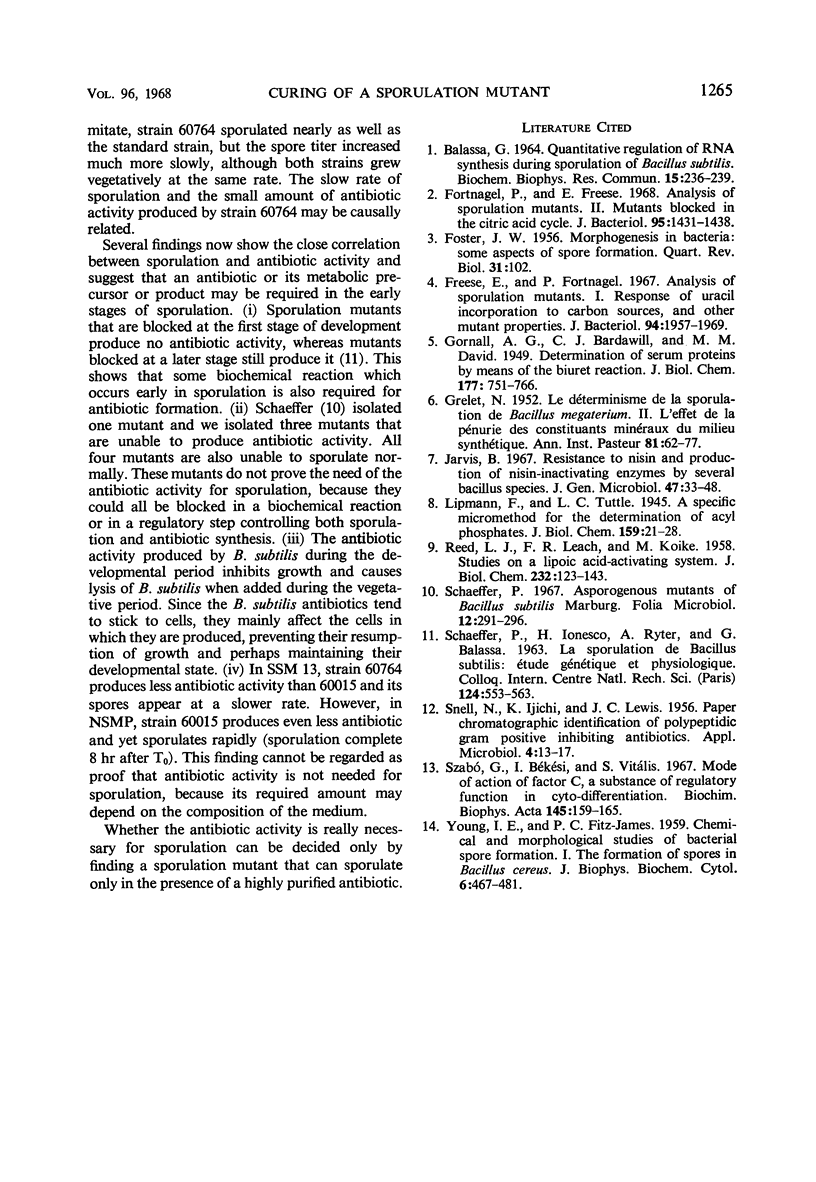
Selected References
These references are in PubMed. This may not be the complete list of references from this article.
- Balassa G. Quantitative regulation of RNA synthesis during sporulation of Bacillus subtilis. Biochem Biophys Res Commun. 1964 Mar 26;15(3):236–239. doi: 10.1016/0006-291x(64)90152-4. [DOI] [PubMed] [Google Scholar]
- FOSTER J. W. Morphogenesis in bacteria: some aspects of spore formation. Q Rev Biol. 1956 Jun;31(2):102–118. doi: 10.1086/401259. [DOI] [PubMed] [Google Scholar]
- Fortnagel P., Freese E. Analysis of sporulation mutants. II. Mutants blocked in the citric acid cycle. J Bacteriol. 1968 Apr;95(4):1431–1438. doi: 10.1128/jb.95.4.1431-1438.1968. [DOI] [PMC free article] [PubMed] [Google Scholar]
- Freese E., Fortnagel P. Analysis of sporulation mutants. I. Response of uracil incorporation to carbon sources, and other mutant properties. J Bacteriol. 1967 Dec;94(6):1957–1969. doi: 10.1128/jb.94.6.1957-1969.1967. [DOI] [PMC free article] [PubMed] [Google Scholar]
- GRELET N. Le déterminisme de la sporulation de bacillus megatherium II. L'effet de la pénurie des constituants minéraux du milieu synthétique. Ann Inst Pasteur (Paris) 1952 Jan;82(1):66–77. [PubMed] [Google Scholar]
- Jarvis B. Resistance to nisin and production of nisin-inactivating enzymes by several Bacillus species. J Gen Microbiol. 1967 Apr;47(1):33–48. doi: 10.1099/00221287-47-1-33. [DOI] [PubMed] [Google Scholar]
- REED L. J., LEACH F. R., KOIKE M. Studies on a lipoic acid-activating system. J Biol Chem. 1958 May;232(1):123–142. [PubMed] [Google Scholar]
- SNELL N., IJICHI K., LEWIS J. C. Paper chromatographic identification of polypeptidic gram positive inhibiting antibiotics. Appl Microbiol. 1956 Jan;4(1):13–17. doi: 10.1128/am.4.1.13-17.1956. [DOI] [PMC free article] [PubMed] [Google Scholar]
- Schaeffer P. Asporogenous mutants of Bacillus subtilis Marburg. Folia Microbiol (Praha) 1967;12(3):291–296. doi: 10.1007/BF02868746. [DOI] [PubMed] [Google Scholar]
- Szabó G., Békési I., Vitális S. Mode of action of Factor C, a substance of regulatory function in cyto-differentiation. Biochim Biophys Acta. 1967 Aug 22;145(1):159–165. doi: 10.1016/0005-2787(67)90665-x. [DOI] [PubMed] [Google Scholar]


